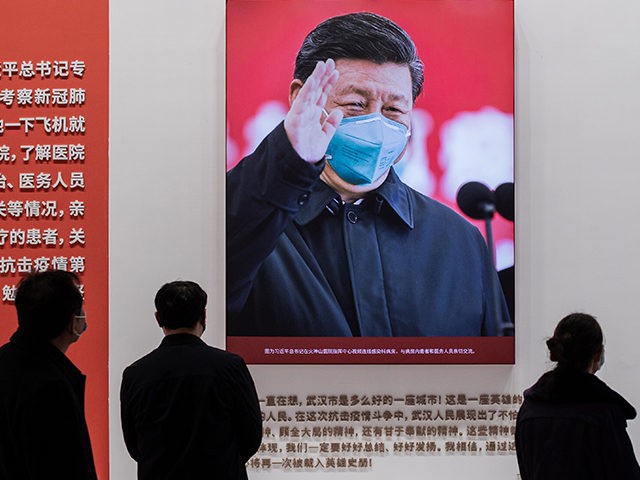Lei Zhenglong, the deputy head of the Chinese National Health Commission (NHC)’s Bureau of Disease Prevention and Control, admitted to reporters on Tuesday that China’s latest outbreak of the Chinese coronavirus has proven “difficult to prevent and control” and thus has spread across 28 Chinese provinces and regions as of Tuesday.
“[T]he current epidemic situation is grim and complex, making it difficult to prevent and control,” Lei told Chinese media outlets at a press conference on March 15.
“[The] Chinese mainland has reported more than 15,000 domestically-transmitted positive cases from March 1 to 14, affecting 28 provinces and regions,” the Chinese public health leader further revealed.
China’s state-run Global Times relayed Chinese NHC data on Tuesday while detailing region-specific outbreaks of the Chinese coronavirus within China’s nationwide epidemic of the disease. The newspaper wrote:
Chinese mainland [legal Chinese territory] reported 3,507 newly confirmed domestically-transmitted cases on Tuesday [March 15], with 3,076 reported by Northeast China’s Jilin Province, and reported another 1,647 silent cases. The total number of 5,154 positive cases has hit new records in China’s daily cases.
In COVID-19 [Chinese coronavirus] worst-hit Jilin Province, 8,201 patients were hospitalized, with more than 95 percent with mild cases or silent carriers, the NHC said.
Chinese state health officials refer to asymptomatic infections of the Chinese coronavirus as “silent cases.” China’s NHC said Tuesday the omicron variant of the Chinese coronavirus accounts for the majority of new infections of the disease documented in recent days.
The Global Times on March 14 quoted Chinese public health experts as saying “the fast spread of Omicron has prompted China to adjust its COVID-19 response to be more targeted and scientific, which includes the nationwide promotion of antigen self-test kits, and it may also see more residents quarantined at home instead of designated hotels.”
“Amid the fast spread of Omicron, China may also adjust its mixed nucleic acid testing policy, in which five or 10 samples are mixed in one group for speed testing,” Jin Dongyan, a biomedical professor at the University of Hong Kong, told the Global Times on Monday.
“The surge of cases indicates that a large number of mixed tests will turn positive, thus many people who are in the positive group — whether infected or not — have to be retested,” Jin said.
The Global Times is published by the People’s Daily, which is the official newspaper of the Central Committee of the Chinese Communist Party.
The Chinese coronavirus originated in the central Chinese city of Wuhan, the capital of Hubei province, sometime in the autumn or winter of 2019, according to the best estimates of international public health experts. Though much about the disease’s provenance remains unknown due to obfuscation by the Chinese Communist Party, the earliest documented cases of the Chinese coronavirus were recorded in Wuhan in December 2019. Chinese Communist Party officials failed to lock down Wuhan in time to prevent the city from suffering an explosive outbreak of the disease by early 2020. The Party’s containment failure ultimately allowed Wuhan’s initial infections of the Chinese coronavirus to spread beyond the city to other parts of China and the world.
Wuhan’s epidemic caused the ongoing Chinese coronavirus pandemic, officially declared by the World Health Organization on March 11, 2020.

COMMENTS
Please let us know if you're having issues with commenting.